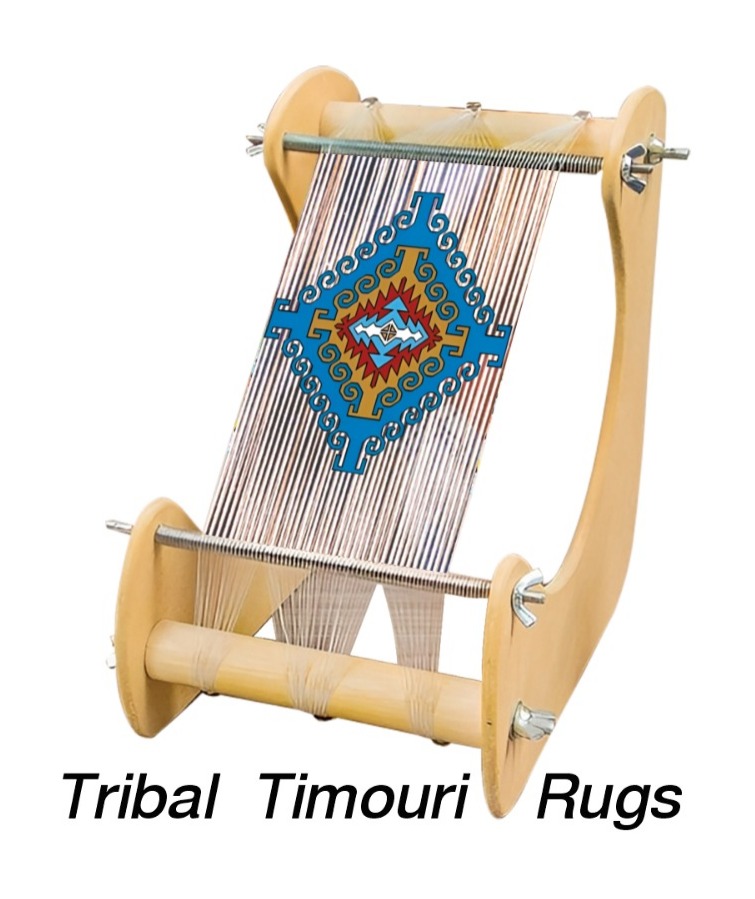About Us
About Tribal Timouri Rugs
Our rugs are sourced from small cottage industry weaving workshops, not factories. Rugs are woven in weavers’ homes. Weavers are paid a fair living wage. We cherish the artisans who create these extraordinary rugs. The weaving of these rugs sustain indigenous traditions and keeps families together.
Our rugs are all natural! We specialize in rugs made with handspun wool and natural dyes. Not only are these materials more beautiful, they are also more environmentally friendly. Hand made rugs are one of the most sustainable products ever made. They can last for generations. When you buy a good hand made rug, you are buying a rug for a lifetime.
Our rugs are naturally washed with soap and water. Softer colors are made by using lesser amounts of the natural dyes instead of by bleaching bright synthetic colors. We avoid selling rugs that have been distressed with chemical treatments and “antique” washes.

HANDSPUN WOOL
This refers to wool that was processed by hand. Although some people prefer the uniformity and formal appearance that machine-spun wool imparts to carpets, most connoisseurs value the effect produced by hand spun wool. When spun by hand, yarn absorbs more dye where it is loosely spun and less dye where it is spun tightly, thus producing pleasant variegation in the colors of a rug. This variation in color is known in the rug world by the Turkish term abrash. Hand spun wool naturally requires more labor and thus rugs woven with handspun wool are more costly. But, the hand spinning process is less abrasive to the wool; more of the natural oils (lanolin) are retained and less fibers are broken. This produces a wool thread that is more resilient and carpets made with such wool will last long and wear better. The drop spindle is the tool most commonly used for hand spinning in rug weaving countries.
QUALITY
Tribal Timouri Rugs specializes in new Naturally Dyed Rugs. With their longevity and natural materials, handmade rugs are one of the most sustainable products ever made. We work with some of the best producers of contemporary carpets and collaborate directly with weaving families. This allows us to design unique rugs that you will not find in other shops.
NATURAL DYES
History
Until the end of the 19th century, natural dyes were the only dyes used in the production of textiles. During the Victorian era, chemists discovered formulas for producing cheap aniline dyes. These early synthetic dyes swept through rug producing countries like a plague. These aniline dyes faded rapidly and the colors bleed when washed with water. By the mid 20th century, the art of the naturally dyed rug was lost. Up until 1980, if you wanted to own a beautiful naturally dyed rug, you were obliged to buy an antique rug produced before the advent of synthetic dyes.
Luckily for us, this changed in the 1980s. A German scientist, Dr Bohmer, with a passion for antique carpets unlocked the formulas for creating natural dyes. With the help of Turkish authorities, he founded the DOBAG project: creating Turkish rugs made entirely with naturally dyed wool. Soon, other entrepreneurs followed this example and now a small but passionate group of rug producers chose to make their rugs with these superior dyes.
What are Natural Dyes?
Natural dyes are dyes that are sourced from traditional plant and mineral sources. Some of the most widely used dyes in carpets are indigo, which creates all shades of blue, and madder root which creates reds, from light pink to brilliant burgundy. Other natural sources include pomegranate skin for yellows and walnuts husks for black. Green is created in a two-part process by first dyeing wool blue with indigo and then over-dyeing with yellow.
Advantages of Natural Dyes.
The synthetic dyes used today are excellent and far superior to the earlier aniline dyes. Nevertheless, natural dyes have many advantages over their synthetic counterparts. Natural dyes are more beautiful. The colors they produce tend to have a more organic and natural hue. Wool dyed from plant sources has a more variegated palate (known as Abrash) that shifts in intensity and saturation creating a pleasing hand-made look. In addition, natural dyes tend to be more color-fast. They fade very little when exposed to sunlight. And, when they do fade, they develop a warm patina of age. They do not bleed when washed with water. And finally, natural dyes are not toxic. They do not pose a risk to the dyers or to the environment.
